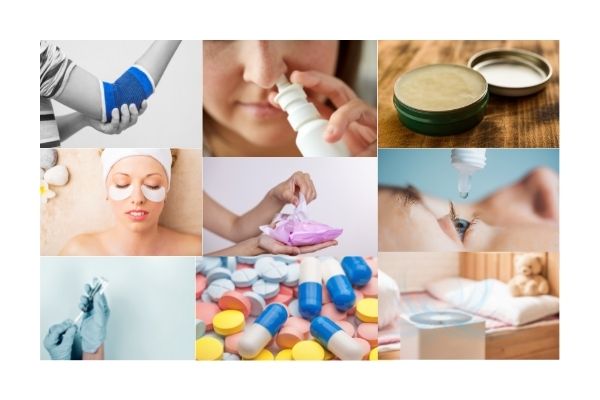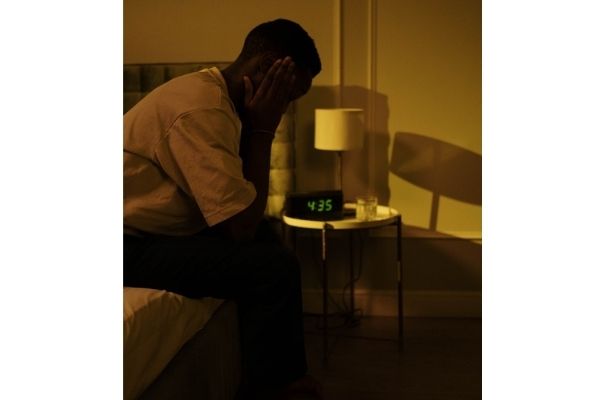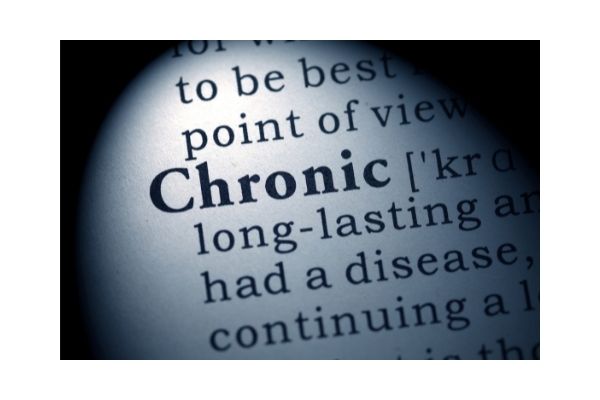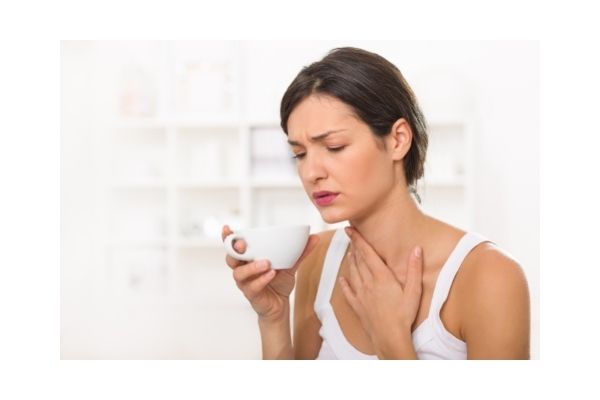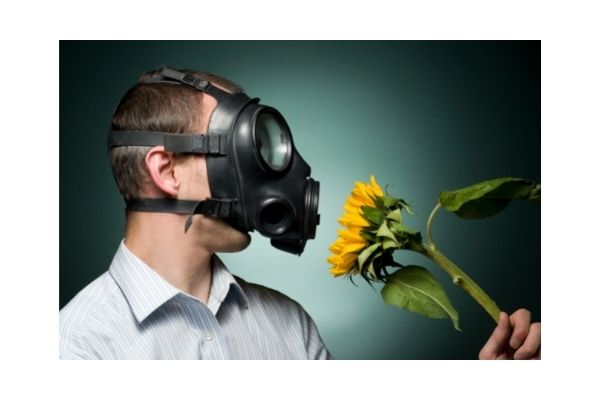Below are the hay fever products used to manage the individual or collective symptoms of hay fever.
1. Bands
2. Balm/Gel
3. Medications
4. Decongestion
5. Jabs
6. Air-purifying humidifiers
7. Nasal spray
8. Nasal filters
9. Wrap-around sunglasses
10. Wipes
11. Eye drops
12. Eye masks
BANDS:
Hay fever armbands are known to be a natural and drug-free alternative to help relieve the symptoms of hay fever. The bands for hay fever are designed in a way that they apply pressure to the LI-11 acupressure point.
It is believed that the human body has more than 2,000 acupuncture points connected by pathways or meridians, and applying pressure on different parts of the body is thought to improve the flow of energy, thereby improving health. In this instance, applying pressure on LI-11 can clear blockages, sore throat, fever, reduces redness and pain in the eyes due to cold, flu, or seasonal allergies.
The hay fever bands are safe for children. However, they are not recommended for pregnant women as the band might cause early labour.
GEL/BALMS:
According to research published in December 2018, the patients treated with allergen-blocker mechanical barrier gel (MBG), both as monotherapy and combination therapy, showed a significant decrease in all symptom scores.
They are several options of hay fever gels in the market.
The gels used to relieve the symptoms of hay fever are suitable for children, pregnant & breastfeeding women. However, it’s best you confirm before purchasing.
Also, the gels are not to be taken internally or swallowed.
MEDICATIONS:
There are several types of medications available for hay fever, such as Nasal corticosteroids, Antihistamines, Decongestants, Cromolyn sodium, including Herbal remedies and supplements.
Before opting for any medications, it’s crucial to consult a GP to understand how to take the medicines, how much to take, when to take, for how long, side effects and what happens if a dose is missed or doubled (overdose).
DECONGESTION:
Nasal congestion has the power to deteriorate a person’s quality of life; it keeps you up at night and has a significant impact on your productivity. It gives you a stuffy nose, clogged sinuses, and a mounting pressure in the head.
Decongestants help relieve congestion caused by the dilation of blood vessels in the nasal passages. However, they do not treat the underlying cause of the blockage.
JABS
Hay fever sufferers usually only require one steroid injection known as Kenalog to reduce symptoms for the entire hay fever season. Kenalog suppresses the body’s immune response to histamines and thus relieving symptoms. Jabs are convenient compared to taking tablets every day.
The only difference between a jab and a tablet form is that once the injection is given, there’s nothing that anyone can do to stop the steroids from leaking into the bloodstream.
Hay fever injections are no longer endorsed or available on the NHS.
AIR PURIFYING HUMIDIFIERS
When it comes to hay fever, your air purifier must have the right level of suction which helps in removing trees, grass and shrub pollens. It should have a filter capable of trapping those allergens in the air.
A Hepa Filter (high-efficiency particulate air) air purifier blocks the pollen particles, along with other pollutants from the air as it passes through the purifier.
An Airfree purifier breaks down the pollen particles so that they no longer cause an allergic reaction. No filter is needed, as this happens inside the core of the Airfree purifier where all particles are incinerated.
NASAL SPRAY:
Nasal sprays are commonly used for getting rid of nasal congestion as it is believed that they provide instant relief. There are three kinds of nasal sprays: Decongestants, Salt-water solutions (Saline nasal sprays) and Steroid nasal spray.
Decongestants: Decongestants are available over the counter or with a doctor’s prescription. It helps shrinks the swollen tissues and narrowing blood vessels in the lining of your nose.
Do not use Decongestants for more than 3 days as it may make your cold symptoms worse (rebound effect).
Salt-water solutions (Saline nasal sprays): The saline nasal sprays loosen up the mucus and keep it from getting crusty. They are readily available and without a prescription.
Steroid nasal spray: The spray helps clear a stuffed nose due to a sinus infection and is also approved to relieve allergy symptoms.
Please read the instructions on the label before using it, as some may differ from the other or follow your doctor’s direction.
NASAL FILTERS:
A nasal filter is a nostril air filter and designed to fit inside the nostrils preventing the inhalation of allergens, pollutants, and irritants such as dust, smoke, and foul odours. These filters are completely invisible when worn. However, comfort depends on an individual basis.
The nasal filters are available in different sizes based on your height.
Before purchasing ensure that your nasal filter is clinically tested, and FDA approved. Do not continue using if you feel irritation and inflammation during or after wearing the nasal filters.
WIPES
Wipes used for hay fever removes pollen and other irritants from your face and hands. The natural oils from the wipes remain on your face and hands trapping pollen and other irritants.
EYE DROPS:
The treatment of using eye drops depends upon the cause of your allergy, your symptoms, and how much the symptoms affect your daily activities.
The types of allergy eye drops include:
Antihistamine:
Eyedrops can quickly ease your symptoms. However, relief may only last for a couple of hours, and it can also make your eyes to be drier.
Anti-inflammatory:
There are two types:
Nonsteroidal anti-inflammatory drugs (NSAIDs): NSAID eyedrops change the way your body makes you feel itchy and affects certain nerve endings. Ketorolac (Acular, Acuvail) is the only NSAID approved for the treatment of the itchy eye.
Corticosteroids: Due to the possible side effects such as increased eye pressure and cataracts, doctors avoid recommending corticosteroid drops for long-term use, unless a case is severe. Itching goes away in an hour after using these drops. Ensure regular check-ups with an eye specialist to check on your eye health if using the corticosteroids eye drops as the side effects include cataracts, eye infection, glaucoma and increased pressure in the eye
Decongestant:
They quickly brighten the whites of your eyes and reduce eye redness for a short time. Narrowing the blood vessels in the eye, Decongestant relieves the redness but may cause the eyes to become permanently bloodshot known as a long-term risk of “rebound redness.”
If you have glaucoma, you should never use decongestant eyedrops.
Mast cell stabilizers:
These eye drops help prevent the release of histamine during an allergic reaction and are specially made to control your symptoms.
Multiple action allergy eyes drop:
Eye drops containing more than one type of medicine are known as dual-action or multiple action allergy eye drops. The combination of antihistamine/decongestant eyedrops reduces eye itching, watery eyes, and redness.
These new types of eye drops are especially helpful for people with allergic conjunctivitis.
WRAP-AROUND SUNGLASSES:
These glasses effectively protect your eyes from the attack of pollen and other irritants. The wrap-around sunglasses physically block the pollen and UV rays from entering
EYE MASKS:
Cold eye compress gel eye masks are being hailed as perfect by many for easing hay fever symptoms. The masks help in relieving the symptoms of hay fever, inflammation, Puffy Eyes, Headaches and Migraines.
Eyes masks for hay fever usually have a self-cooling technology fabric, are affordable and reusable.

